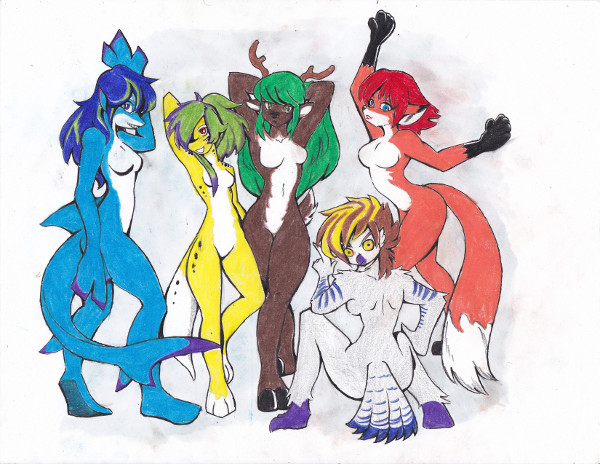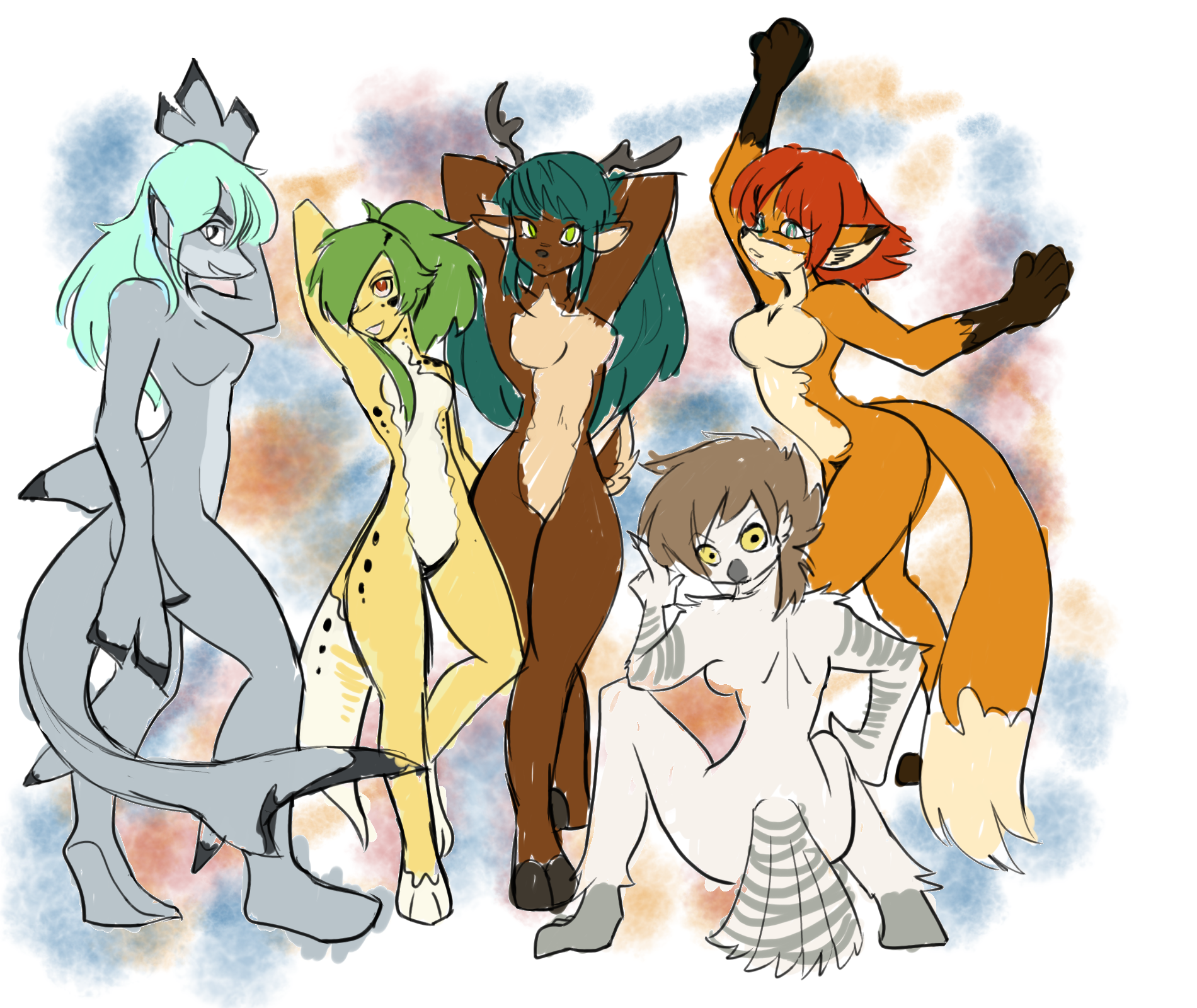(To my NewGrounds followers, I apologize for the scholastic nature of this post, but my school requires me to post this assignment to a blog. I don't like having a lot of accounts floating around, so I'm going to post it here and share with all of you.)
The assignment is to choose a piece of art I don't like, and recreate it in a way that will be appealing. The artwork that I've chosen to dislike is Pablo Picasso's “Les Demoiselles d'Avignon”.

The title means The Ladies of Avignon, and it's a euphemism. Picasso chose to paint a controversial subject in a controversial way. Picasso abandoned the realism that was expected of European art at the time and depicted his subjects with a chaotic menagerie of shapes, edges and linework. Picasso does not use any particular convention in his stylization of the subjects, and even switches styles in the middle of a particular subject. The three faces to the left are reminiscent of Ancient Iberian sculpture, while the two rightmost are based on African masks, subjects which were perceived as primordial and savage at the time. Picasso occasionally uses color to suggest form or distance, but in keeping with the theme, his use of color is haphazard and mostly flattens the image. The color profile is dominated by the reddish skin-tone that denotes the ladies while a grey-blue identifies some kind of textile, dividing them from the environment. The diagonal placement of the figures and anomalous positions of the two rightmost characters easily moves the eye from character to character through the scene.
Before discussing my feelings about Les Demoiselles d'Avignon specifically, I should explain that I have a beef with Picasso. I have heard so many artists and art critics call him the “best artist of the 20th century” or “fundamental to 20th century artwork” or something like that and I just do not see what they see. Picasso's works can be interesting to look at, and can make you think, but they don't hold a candle to the work of artists like Frank Frazetta or Salvador Dali. Picasso allowed sillier art movements to eclipse 20th century art like Pulp Art and Art Deco, which I find much more appealing and which show a much more direct evolutionary line to modern cartoons, video game art and movie art, which are so much more successful than “modern art”. In short, this guy ruined art for an entire century.
Studying Les Demoiselles d'Avignon carefully, Picasso is actually doing a lot of things that I like. I enjoy stylized, flat, “cartoony” depictions, and I believe art is best when we omit irrelevant details and exaggerate important features. However, the most important aspect of artwork is its narrative. Even if the artist does not intend to put a message behind their work, whoever sees the artwork will try to find meaning within it, and create the narrative for themselves. In this piece, Picasso has taken the narrative away from the characters who are being depicted in the scene, and made the narrative about the method of depiction itself. This painting of naked women has nothing to say about naked women, it is a message about angles and colors and perspective. Every aspect of these characters is haphazard and bizarre, reinforcing the notion that these are paintings, not people. While this is an interesting experiment to study as an artist or art critic, it is not a theme that resonates with the common person and it does not deserve to be called a great piece of art.
So here is mine. First I want to apologize to my NewGrounds fans for the lower than usual quality. I am not allowed to use digital media for the projects in this class, and I'm not used to doing things the old fashioned way.

The first thing you will probably notice is that I have changed the subjects from humans to anthros. I feel like Picasso did a lot of what he did for the same reasons that anthro artists depict anthros. Both our depictions are confrontational and confusing, forcing the audience to reassess reality. Anthros also give us a way to depict savageness or primordial innocence in an era where we cannot feel such things about human cultures. The other important change is that I have abandoned proto-cubism for a modern cartoon-anime style. Although I do not like that Picasso focused so strongly on the artistic process rather than the characters, I do not believe that the artistic process needs to be completely excluded from the narrative of the artwork, and cartoonism does a great job of providing balance between the two. You may have noticed that one of Picasso's ladies has her head turned all the way around to look directly behind her. In my depiction, I have replaced that lady with an owl, to give myself an excuse to keep the same pose. I have kept more or less the same poses and positions as Picasso did, as he did a good job with that in the original composition (which makes it all the more infuriating that he decided to mess it up on purpose). Using human skin colors would have been the wrong kind of nonsensical, so I used some cartoony animal colors instead. I did a preproduction sketch with more natural animal colors based on color picking from photographs, but I used the school-provided color pencils for the final render and they didn't come with a color picker. I have abandoned the background entirely, in the style of modern Character Art. Since my ladies use a lot of paper-white, I used a light marker on the empty space around them to differentiate.
I read that fans of Picasso were disappointed with the frenchified title Les Demoiselles d'Avignon, since Picasso was Espanish, so I have been referring to my piece as “Las Chicas”.
I am required to show you at least one of my preproduction stages, so here is the sketch with natural colors.
